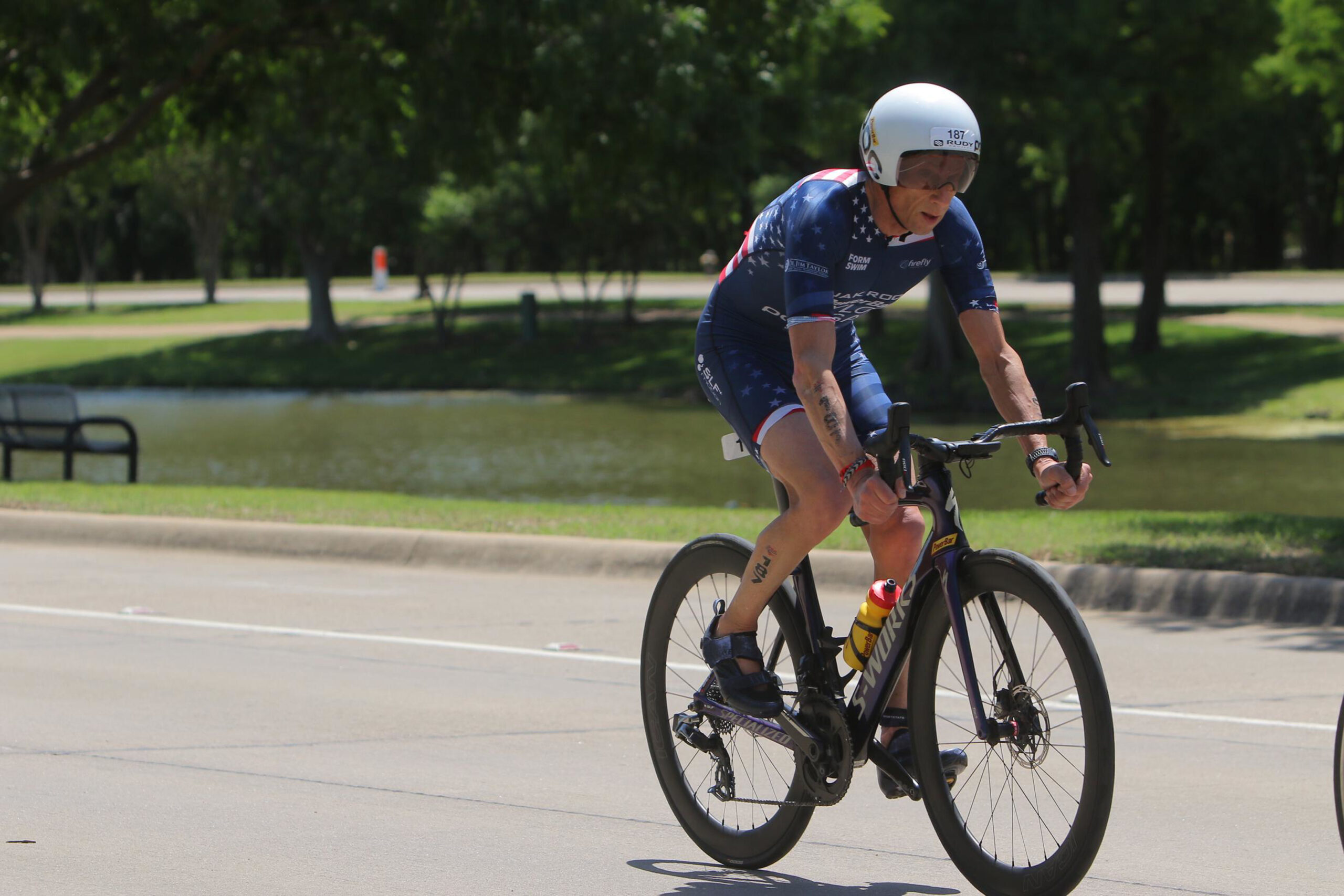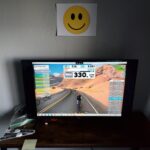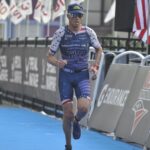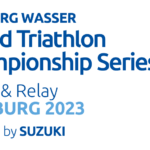Triathlon is one of the most difficult sports out there because it is so physically taxing and complex. Unlike most sports, triathlon is actually three sports rolled into one. Because of these demands, triathlon is also mentally challenging, requiring your mind to “stay in the game” in the face of internal stressors, such as extreme exertion, fatigue, and pain, and external forces, including weather, terrain, and course conditions, for long periods of time.
Imagine if there was a magical mental tool you could use that would not only improve the quality of your  training, but, more importantly, help you to be maximally prepared on race day. Well, there actually is such a tool and it’s not magical at all; it’s called mental imagery (some call it visualization).
training, but, more importantly, help you to be maximally prepared on race day. Well, there actually is such a tool and it’s not magical at all; it’s called mental imagery (some call it visualization).
You may scoff at the idea that picturing yourself swimming, biking, and running (or doing transitions) in your mind’s eye can have any benefit to you. But I can assure you, from both personal triathlon experience (I use imagery in my own race preparations) and my using it with some of the world’s best triathletes that I work with, that mental imagery can be a real game changer in your ability to perform your best and execute your plan on race day.
The World’s Best Triathletes Use Mental Imagery
Whenever I have the opportunity to work with or meet a pro triathlete, I ask them which mental tools they find most beneficial. Mental imagery is the one that they mentioned most often. They use the power of seeing and feeling themselves training and competing to help them get as prepared as possible mentally to perform their best in the biggest events of their season.
seeing and feeling themselves training and competing to help them get as prepared as possible mentally to perform their best in the biggest events of their season.
But don’t be fooled into thinking that these remarkable triathletes just do mental imagery before big races. In fact, they use it all year round. Why? Because they know they can benefit in so many ways—mentally, physically, technically, and tactically—from imagining themselves performing thousands of times without having to actually be swimming, biking, running, or even transitioning. Simply by reproducing how they want to perform in their mind’s eye, they get better.
Keys to Quality Mental Imagery
There’s no better time than the present to begin to make mental imagery a part of your overall triathlon training regimen to help you make big gains in your training and competitive preparations as you enter the heart of your race season.
 Just like other aspects of your triathlon training program, mental imagery won’t work if you only do it every once in a while. You should approach your imagery the same way you approach the rest of your triathlon training; it should be structured and consistent. Think of mental imagery as strength training for the mind; you want to strengthen your mental “muscles,” including motivation, confidence, intensity, focus, and emotions, by exercising them regularly with mental imagery.
Just like other aspects of your triathlon training program, mental imagery won’t work if you only do it every once in a while. You should approach your imagery the same way you approach the rest of your triathlon training; it should be structured and consistent. Think of mental imagery as strength training for the mind; you want to strengthen your mental “muscles,” including motivation, confidence, intensity, focus, and emotions, by exercising them regularly with mental imagery.
There are five factors that impact the quality of mental imagery. You can develop each of these areas so you can get the most out of your imagery.
Imagery perspective. Imagery perspective refers to where the “imagery camera” is when you do imagery. The internal perspective involves seeing yourself from inside your body looking out, as if you were actually performing. The external perspective involves seeing yourself from outside your body like on video. Research indicates that one perspective is not better than the other. Most people have a dominant perspective with which they’re most comfortable. Use the perspective that’s most natural for you and then experiment with the other perspective to see if it helps you in a different way.
video. Research indicates that one perspective is not better than the other. Most people have a dominant perspective with which they’re most comfortable. Use the perspective that’s most natural for you and then experiment with the other perspective to see if it helps you in a different way.
Vividness. This factor involves how clearly you experience your imagery. Is your imagery blurry (or nonexistent) or is it like watching a 4K HD television (if you’re unfamiliar with TV technology, it is the most clear and detailed images available). Rarely do triathletes have absolute vividness right away. Rather, it is something that develops with practice.
Control. Have you ever been doing imagery and you keep making mistakes in your imagined performances? Perhaps you see yourself with poor swim technique or your bike swerves all over the road or you keep tripping while running. This problem relates to imagery control, which is how well you’re able  to imagine what you want to imagine. It’s not uncommon for triathletes to swim, bike, run, or transition poorly in their imagery and it often reflects a fundamental lack of confidence in their ability to perform their best. If mistakes occur in your imagery, you shouldn’t just let them go by. If you do, you’ll just further ingrain the negative image and feeling which will hurt your efforts. Instead, when you make mistakes in your imagery, immediately rewind the “imagery video” and edit it and rerun the imagery video until you get it right.
to imagine what you want to imagine. It’s not uncommon for triathletes to swim, bike, run, or transition poorly in their imagery and it often reflects a fundamental lack of confidence in their ability to perform their best. If mistakes occur in your imagery, you shouldn’t just let them go by. If you do, you’ll just further ingrain the negative image and feeling which will hurt your efforts. Instead, when you make mistakes in your imagery, immediately rewind the “imagery video” and edit it and rerun the imagery video until you get it right.
Multiple senses. Good imagery is more than just visual, that’s why I don’t like to call it visualization. The best imagery involves the multi-sensory reproduction of the actual triathlon experience. You should duplicate the sights, sounds, and physical sensations that you would experience in an actual training  session or race. Visual imagery involves how clearly you see yourself performing. Vivid auditory images are important because the sound of yourself performing are an important part of your triathlon experience. Emotionally, if you get nervous before a real race, you should get nervous in your imagery (and then use mental tools to relax). The most powerful part of mental imagery is feeling it in your body. That’s how you really ingrain new physical and mental skills and habits.
session or race. Visual imagery involves how clearly you see yourself performing. Vivid auditory images are important because the sound of yourself performing are an important part of your triathlon experience. Emotionally, if you get nervous before a real race, you should get nervous in your imagery (and then use mental tools to relax). The most powerful part of mental imagery is feeling it in your body. That’s how you really ingrain new physical and mental skills and habits.
Total reproduction. For you to get the most out of your imagery, you want to create a total reproduction of your actual triathlon experience. Everything that you think and feel (both physical and emotional feelings), every sense you experience, you want to reproduce in your imagery. In other words, you want to make your imagery as real as possible.
Be Realistic in Your Imagery
Imagine realistic conditions. Imagine yourself performing under realistic conditions, in other words, always do imagery under those conditions in which you normally train and compete. That is, if you often compete in difficult conditions (e.g., cold, heat, rain, hilly course), imagine yourself on in those tough conditions.
Imagine realistic performances. You shouldn’t imagine yourself flying through a race with little effort or discomfort. Instead, imagine yourself facing the challenges you normally are confronted with in a race, such as fatigue and pain, and overcoming them. Also, if you’re a young triathlete, don’t imagine yourself racing like a pro. Instead, imagine yourself the way you normally swim, bike, and run, but incorporate positive changes from watching the pros into your efforts that you are working on.
such as fatigue and pain, and overcoming them. Also, if you’re a young triathlete, don’t imagine yourself racing like a pro. Instead, imagine yourself the way you normally swim, bike, and run, but incorporate positive changes from watching the pros into your efforts that you are working on.
Develop A Triathlon Imagery Program
The key to effective mental imagery is consistency. You wouldn’t expect to get stronger by lifting weights once every few weeks. You wouldn’t expect to get better technically in the pool by swimming periodically. The same holds true for mental imagery. The only way to gain the benefits of mental imagery is to use it frequently.
Set imagery goals. Set specific goals for what areas you want to work on. For example, you might focus on some technical change in your swimming, pedaling circles on your bike, keeping a long and relaxed stride while running, or having a smooth and fast transition.
Training- and race-specific imagery. Select training and race situations that are appropriate for your level of competition. In other words, if you’re a mid-pack age grouper, don’t imagine yourself competing in the Olympics. Always imagine yourself performing on a specific course in a particular event (e.g., Escape from Alcatraz, St. Anthon y’s). Then select a different training or race venue for each imagery session, thus reaching your imagery goals in a diverse array of venues, conditions, and races.
y’s). Then select a different training or race venue for each imagery session, thus reaching your imagery goals in a diverse array of venues, conditions, and races.
Imagery sessions. Imagery sessions should be done 3-4 times per week and last no more than 10 minutes. Set aside a specific time of the day when you’ll do your imagery (just like you do for your other triathlon training) and program alerts in your smartphone as reminders. Find a quiet, comfortable place where you won’t be disturbed. Take five slow, deep breaths to clear your mind and relax your body.
Imagery log. One challenge with imagery is that, unlike the physical aspects of your triathlon training, the results aren’t tangible. An effective way to make your imagery more concrete is to keep an imagery log. A log should record key aspects of every imagery session including the quality of the imagined performance, any thoughts and feelings that occur (positive or negative), problems that emerged, what you did well in your imagery, and what you need to work on for the next session. An imagery log enables you to see progress in your imagery, thereby making it more rewarding and motivating you to want to continue to do it. I include an imagery log in my mental imagery workbook that you can download and print out.
Accept the Challenge
So, here’s the deal. I can’t guarantee that committing to a triathlon imagery program will turn you into a national champion or allow you to earn your pro card, or that your efforts will result in a quantum leap in  your triathlon performances. But I will say that if you commit to a consistent imagery program, you will see the benefits in how better prepared you are mentally for you to perform your best in your “A” races. And if you combine the imagery program with an intensive physical conditioning regimen and quality swim, bike, and run training, then I can say with confidence that when you race, you will be more motivated, confident, intense, and focused, and you’ll be able to say, “I’m as prepared as I can be to perform my best and achieve my goals today.” And, ultimately, that’s all you do.
your triathlon performances. But I will say that if you commit to a consistent imagery program, you will see the benefits in how better prepared you are mentally for you to perform your best in your “A” races. And if you combine the imagery program with an intensive physical conditioning regimen and quality swim, bike, and run training, then I can say with confidence that when you race, you will be more motivated, confident, intense, and focused, and you’ll be able to say, “I’m as prepared as I can be to perform my best and achieve my goals today.” And, ultimately, that’s all you do.







